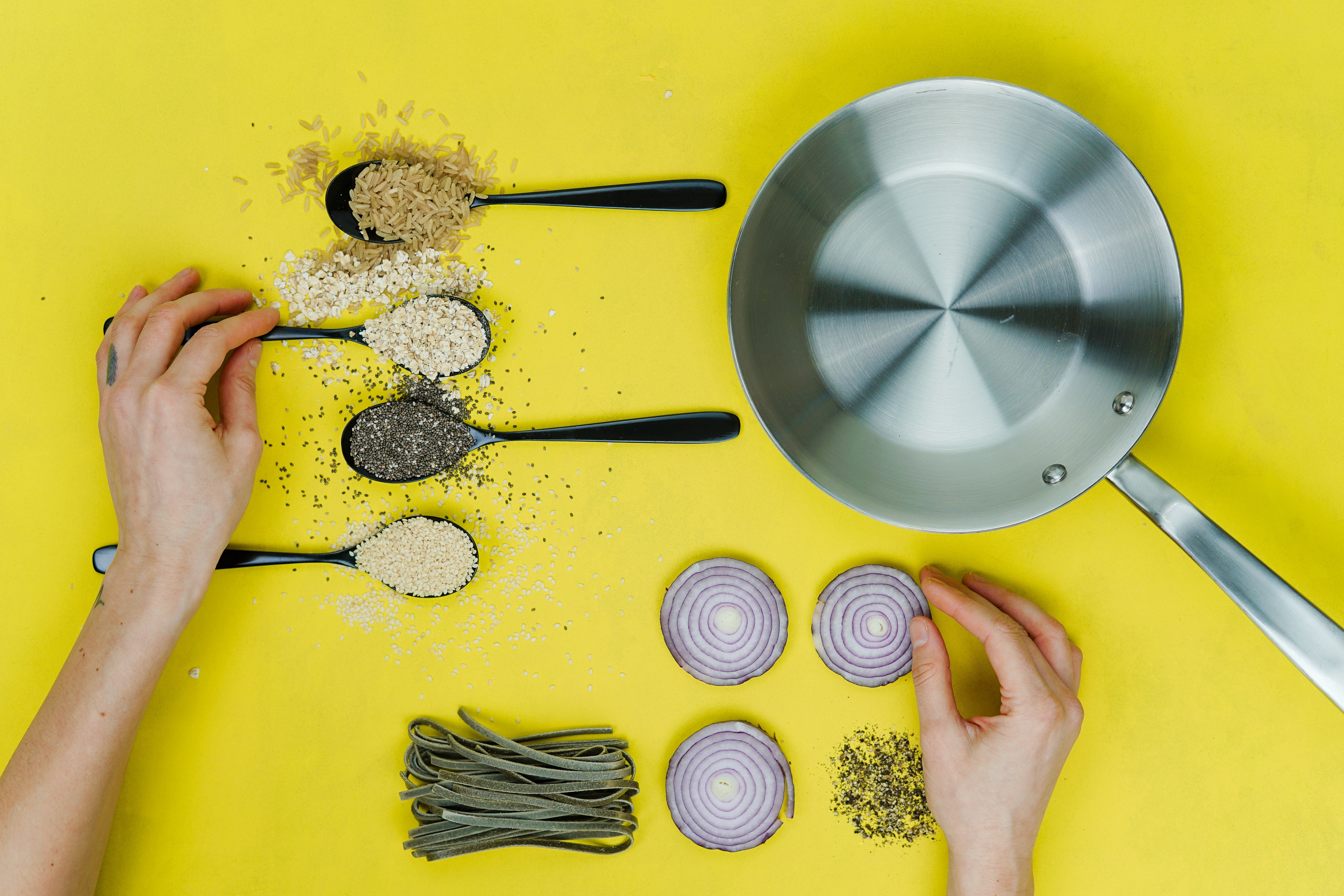It’s a common complaint that fewer and fewer people know how to cook anymore. We are all so divorced from the food production and preparation process, the argument goes, that home cooking is a relic of a bygone era. Foodie gurus advise that we go back to the basics, that we shop local and in season like our ancestors did, that we understand the elementals of salt, fat, acid, and heat. Any dissatisfaction and guilt I might feel after five nights of takeout or pre-made meals is all down to complacency. You could make time to cook three sustainable, ethically sourced meals a day, food pundits and Instagram influencers admonish, you just choose not to.
In a recent Vox piece on the so-called “crisis in American kitchens,” Rachel Sugar picks up on the bootstrap rhetoric of the moment. “The message is, yes, there’s a problem,” she writes. “But we can fix it, which is to say, you can fix it. You just have to try harder, shop smarter, cook better.” But according to the three authors of Pressure Cooker: Why Home Cooking Won’t Solve Our Problems and What We Can Do About It that Sugar interviews, the fix isn’t nearly as simple as subscribing to HelloFresh or learning how to meal prep. In studying more than 150 low- and middle-income primary caregivers of young children in Raleigh, North Carolina, the sociologists confirmed that it wasn’t an issue of trying. “The mothers and grandmothers in the book do take food seriously,” Sugar says. “Across income levels, they care about how they feed their families, and across income levels, they feel like they’re failing.”
Over the course of the interview, the authors debunk the myths implicit in the overly simplistic ethos of “getting back into the kitchen” that fuels so much of foodie culture, pointing to tight food budgets, lack of basic kitchen equipment or space, and packed work schedules as the real barriers, rather than mere lack of effort. But more importantly, they question the underlying idea that once upon a time there existed an era in which everyone cooked all their own meals and knew exactly where their eggs came from. An era where, as one of the authors Sinikka Elliott describes, “there’s no doubt about the origins, or [concern] that unhealthy ingredients are being snuck in there.” But that romanticized ideal of a past where every meal was home-cooked and nutritious only included “a small minority of” households: namely white, middle- to upper-class ones that had domestic help, usually women of color.
The middle-class shift away from having hired household help is one of the many changes in the past few decades that seems to have fueled the growing anxiety around food preparation or lack thereof. According to Elliott, “Between 1880 and 1940, almost all American upper- and middle-class families had at least one domestic servant they employed. By 2001, one in about 162 households had a domestic servant.” As the proliferation of domestic help declined, middle-class families began to feel the anxiety of constantly being stretched for time that poorer Americans had always felt. Ultimately, in viewing from-scratch, full-time home cooking on top of a modern, full-time job and family life as an ideal, we are chasing after a goal that very few humans have ever actually achieved.
The malcontent and anxiety driven by an endless striving toward a romanticized past that never existed is, in many ways, the defining emotion of our time. And that striving makes sense. It’s much easier to glorify a Brady Bunch lifestyle of dinner together every night than to acknowledge the systemic realities of exploited domestic labor that made it possible. It’s easier to dream fondly of an idyllic self-sustaining farm diet without thinking about the fact that, as Elliott says, “toward the end of winter, it’s really looking bad. Everything is wrinkled and soggy, and it’s not very much fun to eat.” And feeling guilt over ordering another meal or picking up McDonalds for the kids is a quicker-twitch response than thinking about the reality of stagnating wages combined with overlong working hours that makes those choices appealing or necessary.
The American drive toward individualism, toward treating every problem as a measure of personal effort rather than as part of a larger system, elides the root causes of structural issues. It turns everything into a moral issue, rather than a reason to agitate for change. The murkiness around where the food we eat comes from and how it’s raised and how much sugar is added to it is a more than worthy cause of anxiety, considering the outsize influence that the food industry has on both the American regulation apparatus and dietary guidelines. Concern over not having the money or resources to prepare a decent meal while working insane hours is more than justified. But whitewashing the messy reality of history isn’t the cure to that anxiety or concern—and neither is buying a Blue Apron subscription.
